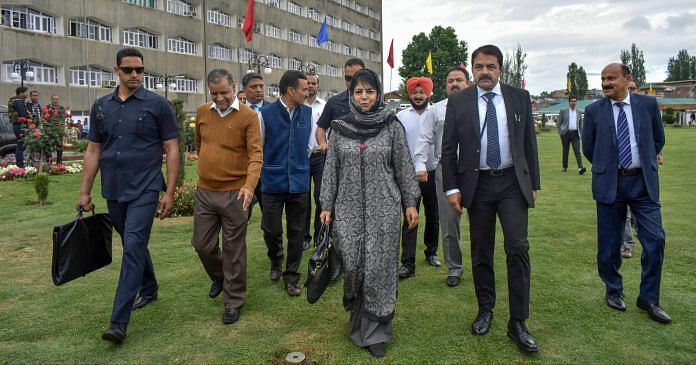The ‘Darbar move’, as the practice is called, was started in 1872 by Maharaja Gulab Singh to escape Jammu’s extreme summer and Srinagar’s bitter winter.
New Delhi: On Monday, the J&K civil secretariat reopened for the summer in Srinagar, having functioned the past six months, during the winter, in Jammu. The exercise progressed amid restrictions imposed in Srinagar to prevent a sit-in called by separatists outside the secretariat over Sunday’s Shopian encounter.
The shift of the state’s civil secretariat between J&K’s summer and winter capitals, Srinagar and Jammu, respectively, is a biannual tradition that has continued for over 145 years.
The ‘Darbar move’, as the practice is called, was started in 1872 by Maharaja Gulab Singh, the founder of the Dogra dynasty, in order to escape Jammu’s extreme summer and Srinagar’s bitter winter. Now, the secretariat functions from Srinagar between May and October, and Jammu between November and April.
A large-scale exercise
The exercise involves over 7,000 secretariat employees shuttle between Srinagar and Jammu, a distance of nearly 300 km, twice annually, and the transfer of thousands of voluminous files in buses and trucks.
The shift grants a two-week leave as well as compensatory allowance for the employees involved.
The practice has several benefits, the most prominent being the equal focus it brings on both the state’s regions. Ahead of the move, the infrastructure of the destination city is polished up; the pot-holes are repaired, and so are the pedestrian walkways. The late J&K chief minister Mufti Mohammad Sayeed saw the exercise as “a bridge between the diverse regions of Jammu and Kashmir”.
However, it has also evoked criticism, especially on account of the expenditure incurred on it, roughly Rs 40 crore each year, money that critics say can be better used elsewhere.
There is also the housing problem, as the non-local employees have to be accommodated each of the cities. While some departments move their full strength, others are allowed only 33 per cent of their staff or 10 employees.
Former Prime Minister Rajiv Gandhi’s brush with the practice makes for an interesting anecdote. Stranded in the Valley due to heavy snowfall during a visit in January 1987, when the state headquarters was in Jammu, he asked the then CM Farooq Abdullah to review the practice.
In 2012, the then chief minister Omar Abdullah had raised questions against the practice. “Do I think the ‘Durbar move’ is a waste of money? Yes I do. Is there an alternative? I haven’t seen a viable alternative suggested,” he had said.
Last year, two senior leaders of the BJP (the party is a coalition partner in the J&K government), Virendra Gupta and Kavinder Gutpa, had also demanded an end to the shift, proposing a bifurcation of the offices as an alternative, suggesting that both remain functional throughout the year.






